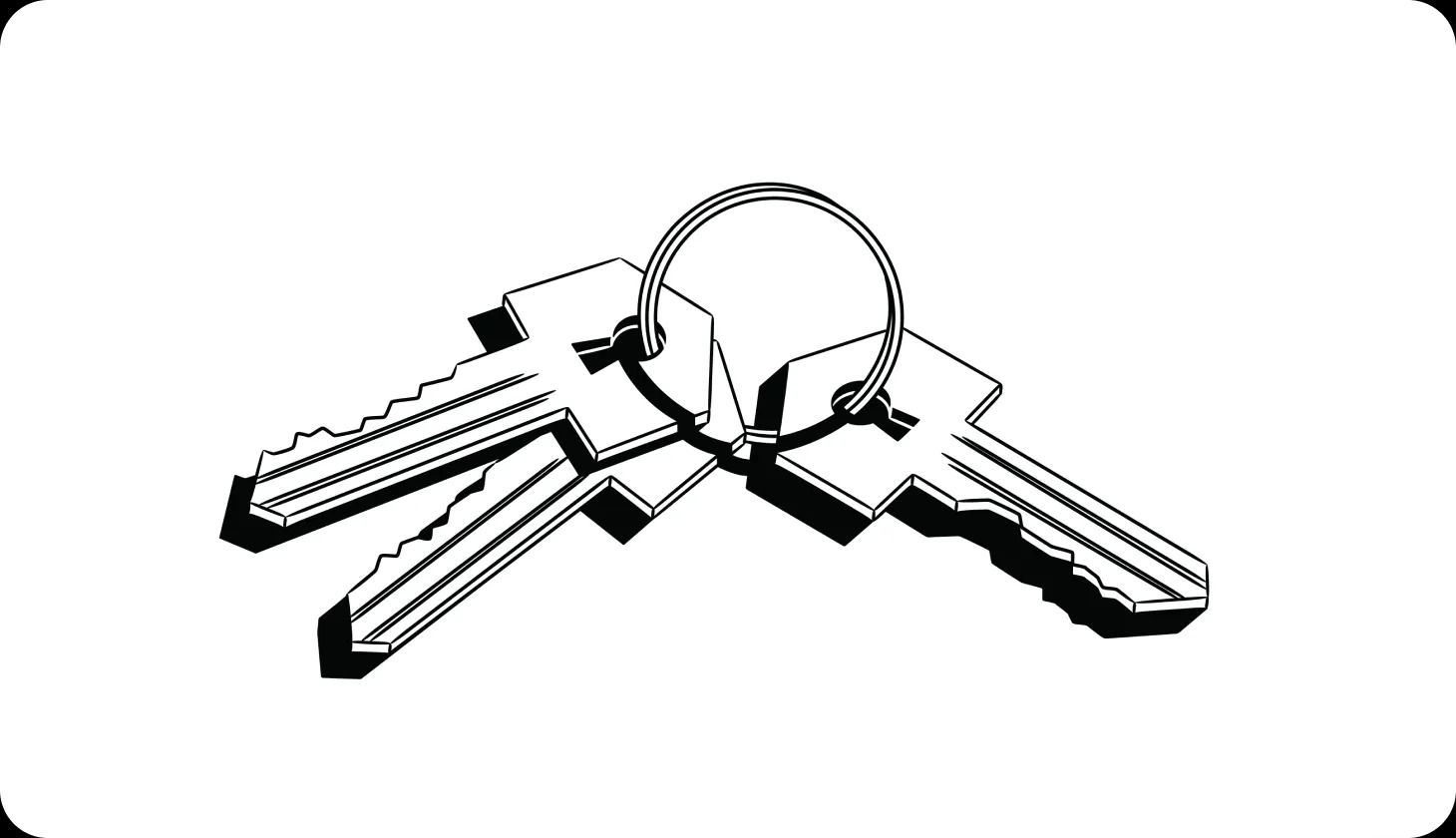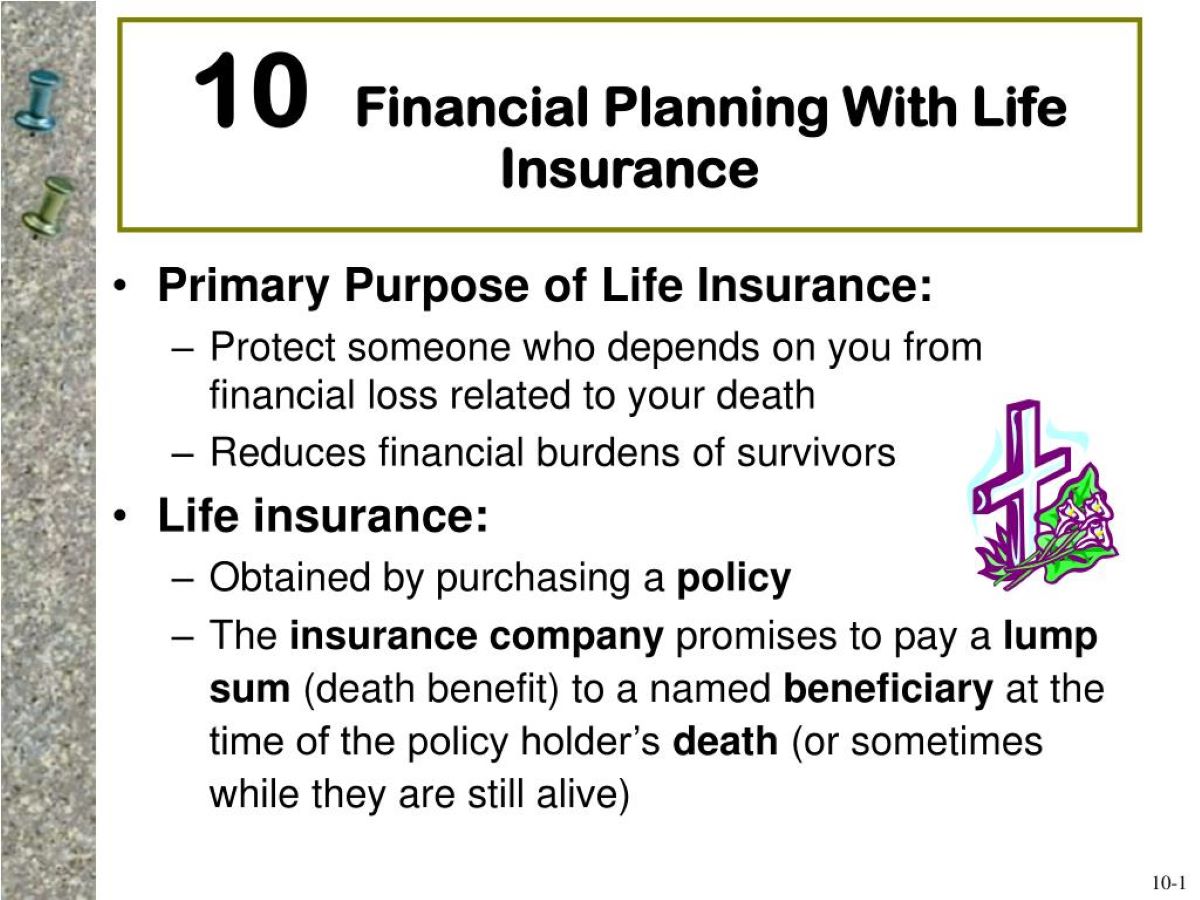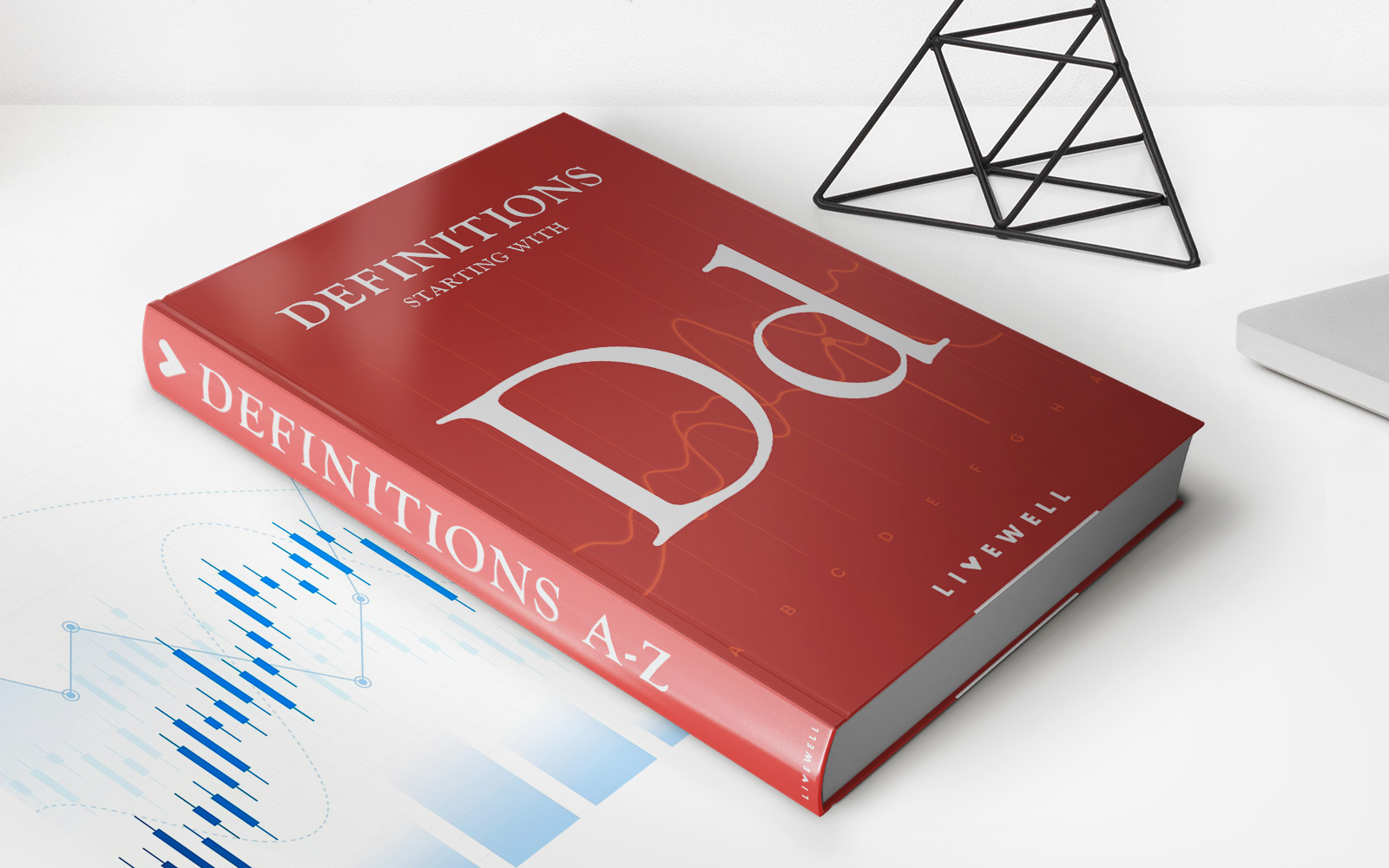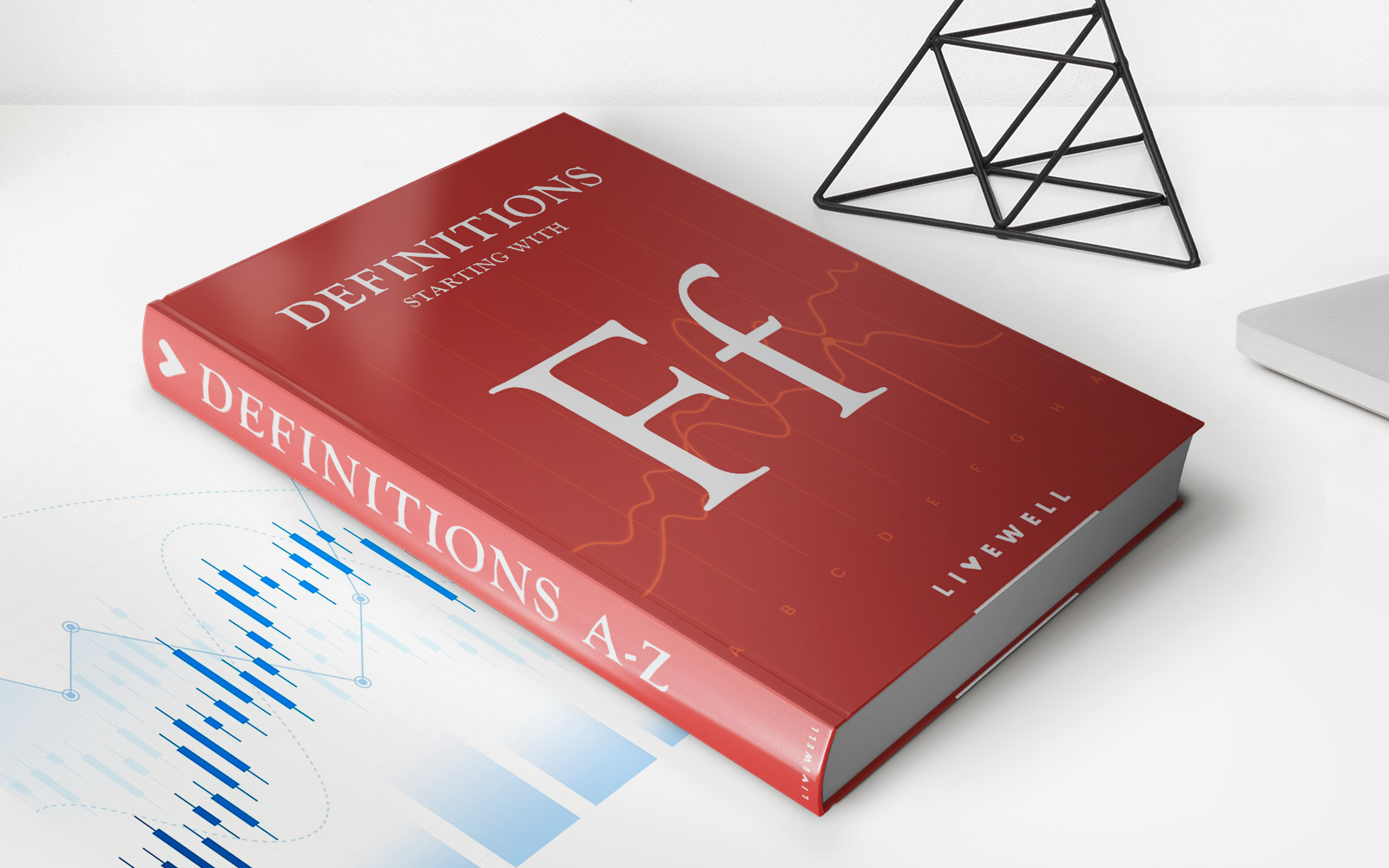Home>Finance>How Can Insurance Protect You From Financial Loss?


Finance
How Can Insurance Protect You From Financial Loss?
Published: November 28, 2023
Learn how insurance can safeguard your finances and protect you from unexpected financial losses. Get peace of mind with comprehensive coverage.
(Many of the links in this article redirect to a specific reviewed product. Your purchase of these products through affiliate links helps to generate commission for LiveWell, at no extra cost. Learn more)
Table of Contents
- Introduction
- Understanding Insurance
- Types of Insurance Coverage
- Property Insurance
- Health Insurance
- Auto Insurance
- Life Insurance
- Liability Insurance
- Benefits of Having Insurance Coverage
- Protection from Financial Loss
- Peace of Mind
- Legal Requirements
- Factors to Consider When Choosing Insurance
- Premiums and Deductibles
- Coverage Limits
- Exclusions and Limitations
- Claims Process
- Comparison Shopping for Insurance
- Conclusion
Introduction
Insurance is a crucial tool that can protect you from financial loss and provide you with peace of mind in uncertain times. Whether it’s your home, health, car, or life, insurance coverage can offer a safety net by mitigating potential risks and offering financial support when you need it most. Understanding the different types of insurance and their benefits is essential for making informed decisions about the coverage you need.
Insurance is a contract between the policyholder and the insurance company. In exchange for regular premium payments, the insurance company agrees to cover specific risks outlined in the policy. This coverage can vary depending on the type of insurance and the policy terms.
In this article, we will explore the various types of insurance coverage available and delve into how they can protect you from financial loss. We will also discuss the importance of insurance in meeting legal requirements and highlight factors to consider when choosing insurance policies. By the end, you will have a better understanding of the role insurance plays in safeguarding your financial future.
Understanding Insurance
Insurance is a contract-based financial product that provides financial protection against various risks and uncertainties. It is designed to protect individuals, businesses, and other entities from the financial burden that can arise from unexpected events. By paying a regular premium, policyholders transfer the risk to the insurance company, which, in turn, agrees to compensate for covered losses.
At its core, insurance operates on the principle of risk pooling. Many individuals or businesses contribute to a pool of funds, which is used to pay for the losses of the few who experience them. Insurance companies use statistical analysis and actuarial principles to assess the likelihood and potential cost of specific risks. Based on these assessments, they determine the premiums to be charged to policyholders.
Insurance coverage can apply to a wide range of areas, including property, health, auto, life, and liability. Each type of insurance has its specific terms, conditions, and coverage limits. Understanding the details of your insurance policy is crucial to ensure that you have adequate coverage for your needs.
In addition to specifying the coverage, insurance policies also outline exclusions and limitations. It’s essential to review these carefully to fully understand what risks are covered and what is not. Furthermore, policies generally have deductibles, which are the amount the policyholder must pay out of pocket before the insurance coverage kicks in.
Insurance is regulated by state or national laws, and insurance companies must comply with these regulations to operate legally. This ensures that policyholders are protected and treated fairly in the event of a claim. Insurance companies are also required to maintain the financial stability necessary to fulfill their obligations to policyholders.
Before purchasing insurance, it’s important to assess your needs and consider the potential risks you face. Evaluating your assets, liabilities, and financial goals will help determine the appropriate amount and type of insurance coverage you require. Consulting with an insurance advisor can provide valuable guidance in selecting the right policies for your specific circumstances.
Types of Insurance Coverage
Insurance coverage can be divided into various categories, each designed to protect against different types of risks and provide financial assistance in specific areas. Understanding the different types of insurance coverage available can help you determine which policies are essential for your personal or business needs. Let’s explore some of the common types of insurance:
- Property Insurance: Property insurance provides coverage for your physical assets, such as your home and belongings. It protects against damage or loss caused by perils like fire, theft, or natural disasters. Property insurance policies can also include liability coverage in case someone gets injured on your property.
- Health Insurance: Health insurance is crucial for covering medical expenses. It can help pay for doctor visits, hospital stays, prescription medications, and other healthcare services. Health insurance policies come in various forms, including employer-sponsored plans, individual plans, and government programs like Medicare and Medicaid.
- Auto Insurance: Auto insurance provides coverage for vehicles against damage or loss resulting from accidents, theft, or vandalism. It typically includes liability coverage for bodily injury or property damage caused to others. Depending on your needs, you can opt for additional coverage, such as collision coverage or comprehensive coverage.
- Life Insurance: Life insurance offers financial protection for your loved ones in the event of your death. It pays a death benefit to the designated beneficiaries, which can help cover funeral expenses, outstanding debts, and provide ongoing financial support. There are various types of life insurance, including term life insurance and whole life insurance.
- Liability Insurance: Liability insurance protects individuals and businesses from legal liabilities arising from injuries, property damage, or negligence claims. It provides coverage for legal defense costs and any settlement or judgment awarded to the injured party. Common types of liability insurance include general liability insurance, professional liability insurance, and product liability insurance.
These are just a few examples of the many types of insurance coverage available. Other types of insurance include disability insurance, travel insurance, and business insurance, among others. Understanding your specific needs and risks will help you determine which types of insurance are essential for safeguarding your financial well-being.
Property Insurance
Property insurance is a crucial type of coverage that protects your physical assets against damage, loss, or theft. Whether you own a home, rent an apartment, or have a business property, property insurance provides financial support to help repair or replace damaged property. It also offers liability coverage in case someone is injured on the property.
Property insurance typically covers a wide range of perils, including fire, vandalism, theft, windstorms, and natural disasters like hurricanes or earthquakes. The specific coverage and exclusions may vary depending on the policy and insurance provider.
For homeowners, property insurance often includes coverage for both the structure of the home and personal belongings. In the event of a covered loss, the insurance company will reimburse the policyholder for the cost of repairs or replacement up to the coverage limit stated in the policy. It’s essential to evaluate the value of your property and possessions accurately and ensure that your coverage adequately reflects their worth.
For renters, property insurance known as renter’s insurance is essential. While the landlord’s insurance may cover the physical structure of the building, it does not typically protect the renter’s personal belongings. Renter’s insurance provides coverage for personal property, including furniture, electronics, and clothing, in case of theft, fire, or other covered perils. It may also include liability coverage to protect against claims for accidental damage or injuries that occur within the rented premises.
For businesses, property insurance can be customized based on the specific needs and risks. It covers the physical property, equipment, inventory, and other assets. It can also provide coverage for business interruption, which compensates for lost income and extra expenses if the business is unable to operate due to a covered loss.
When purchasing property insurance, it’s important to review the policy terms and conditions carefully. Pay attention to coverage exclusions, policy limits, deductibles, and any additional endorsements or riders that may affect the coverage. It’s also crucial to keep an up-to-date inventory of your possessions and maintain adequate documentation to support any insurance claims.
Property insurance plays a vital role in protecting your investment and providing financial security. It offers peace of mind by ensuring that you have the necessary resources to recover from unforeseen events and rebuild your life or business. By having property insurance, you can focus on living your life or running your business with confidence.
Health Insurance
Health insurance is a crucial form of coverage that helps individuals and families manage and afford medical expenses. It provides financial support for a wide range of healthcare services, including doctor visits, hospital stays, prescription medications, and preventive care. Health insurance coverage can be obtained through employer-sponsored plans, individual plans, or government programs.
Health insurance offers several benefits and protections. Firstly, it helps individuals and families reduce out-of-pocket expenses by covering a significant portion of medical costs. This can be in the form of co-payments (a fixed dollar amount paid at the time of service), deductibles (the amount paid by the policyholder before the insurance coverage kicks in), and co-insurance (a percentage of the cost shared between the policyholder and the insurance company).
One of the essential benefits of health insurance is access to a network of healthcare providers. Insurance companies negotiate contracts with specific doctors, hospitals, and specialists to create a network of preferred providers. Visiting in-network providers generally results in lower out-of-pocket costs for policyholders. However, some plans also offer out-of-network coverage, though at a higher cost to the policyholder.
Preventive care is another vital aspect of health insurance. Many health insurance plans cover preventive services, such as vaccinations, wellness check-ups, and routine screenings, at no additional cost to the policyholder. This encourages individuals to prioritize their health and catch potential issues early before they become more challenging and expensive to treat.
Another benefit of health insurance is protection against catastrophic medical expenses. Serious illnesses, accidents, or medical emergencies can result in substantial medical bills. Health insurance provides a safety net by limiting the policyholder’s financial responsibility through maximum out-of-pocket amounts. Once the policyholder reaches this limit, the insurance company covers all further eligible expenses for the remainder of the policy year.
Government programs like Medicare and Medicaid offer health insurance coverage for specific populations. Medicare is primarily for individuals aged 65 and older, as well as those with certain disabilities. Medicaid, on the other hand, provides health insurance to low-income individuals and families. These programs play a crucial role in ensuring that individuals who may not have access to employer-sponsored or individual health insurance coverage can still receive necessary medical care.
When selecting health insurance coverage, it’s essential to consider factors such as premium costs, coverage limits, network providers, prescription drug coverage, and any additional benefits or services provided by the insurance plan. It’s also important to review the policy’s terms and conditions, including any exclusions or limitations that may affect coverage.
Health insurance is a vital tool for managing medical expenses and accessing necessary healthcare services. It provides financial protection and peace of mind, ensuring that individuals and families can prioritize their health without the added stress of high medical costs. By having health insurance coverage, individuals can receive the care they need when they need it, promoting overall well-being and long-term financial security.
Auto Insurance
Auto insurance is a type of coverage that protects individuals and their vehicles against financial loss resulting from accidents, theft, or damage. It is a legal requirement in many countries and states to have auto insurance in order to drive legally on public roads. Auto insurance policies come in different forms and offer various types of coverage to meet the specific needs of drivers.
One of the primary components of auto insurance is liability coverage. This coverage pays for bodily injury and property damage caused by the policyholder to other individuals in an accident. It helps cover the medical expenses, vehicle repairs, and legal costs of the affected party. Liability coverage is typically split into two categories: bodily injury liability and property damage liability.
In addition to liability coverage, there are other types of coverage that individuals can choose to include in their auto insurance policies. Collision coverage provides compensation for damage to the policyholder’s vehicle in the event of a collision, regardless of who is at fault. Comprehensive coverage, on the other hand, covers damage to the policyholder’s vehicle caused by events other than collisions, such as theft, vandalism, or natural disasters.
Medical payments coverage, or personal injury protection (PIP), is another component of auto insurance that covers medical expenses for the policyholder and their passengers, regardless of who is at fault in the accident. This coverage can help pay for medical treatment, hospital stays, and rehabilitation.
Uninsured/underinsured motorist coverage is designed to protect the policyholder in the event of an accident with a driver who does not have sufficient insurance coverage. This coverage helps cover the medical expenses, lost wages, and other damages that the negligent driver’s insurance policy may not fully compensate for.
Auto insurance premiums are determined based on several factors, including the driver’s age, driving record, location, type of vehicle, and coverage limits. Safer drivers with clean records and vehicles equipped with safety features may qualify for lower premiums.
When choosing auto insurance coverage, it is important to evaluate your needs and budget. Consider the value of your vehicle, your driving habits, and any specific risks you may face on the road. It is also crucial to review the policy terms and conditions, including deductibles, coverage limits, and any additional benefits or services provided.
Auto insurance serves as a financial safety net for drivers, protecting them from potential financial loss resulting from accidents or vehicle-related incidents. It not only provides financial support for medical expenses and repairs but also offers legal protection in case of liability claims. By having adequate auto insurance coverage, individuals can drive with peace of mind, knowing they are financially protected on the road.
Life Insurance
Life insurance is a type of coverage that provides financial protection for your loved ones in the event of your death. It serves as a safety net, ensuring that your family and beneficiaries are financially secure and able to cover expenses such as funeral costs, outstanding debts, and ongoing living expenses. Life insurance policies come in various forms, each offering different benefits and features.
One of the most common types of life insurance is term life insurance. Term life insurance provides coverage for a specific period, typically ranging from 10 to 30 years. If the policyholder passes away during the term, the designated beneficiaries receive a death benefit payout. Term life insurance is known for providing affordable coverage and is often suitable for individuals with temporary financial obligations, such as a mortgage or raising children.
Another type of life insurance is whole life insurance, also known as permanent life insurance. Whole life insurance provides coverage for the entire lifetime of the insured, as long as the premiums are paid. In addition to the death benefit, whole life insurance also has a cash value component that accumulates over time. Policyholders can access the cash value through loans or withdrawals during their lifetime. Whole life insurance is known for its lifelong coverage and the potential to build cash value.
Universal life insurance is a hybrid type of life insurance that combines the benefits of both term and whole life insurance. It offers flexibility in premium payments and death benefit amounts. Universal life insurance policies also have a cash value component that can grow over time.
When determining the appropriate amount of life insurance coverage, factors such as outstanding debts, funeral expenses, future education costs, and income replacement should be taken into consideration. It’s important to review your financial situation and the needs of your dependents to ensure that the policy adequately protects your loved ones.
Life insurance policies typically require an application and underwriting process, during which the insurance company assesses your health, lifestyle, and other risk factors. The premiums for life insurance are based on factors such as age, health, gender, and the desired coverage amount. It’s important to disclose accurate information during the application process to avoid any issues with the policy in the future.
In summary, life insurance plays a crucial role in providing financial security for your loved ones after you’re gone. It offers peace of mind knowing that your family will be taken care of and can maintain their standard of living in your absence. By choosing the right type and amount of life insurance coverage, you can ensure that your family’s financial future is protected, even in your absence.
Liability Insurance
Liability insurance is a type of coverage that protects individuals and businesses from legal liabilities that may arise from injuries, property damage, or negligence claims. It provides financial protection by covering the costs of legal defense, settlement, or judgment in the event of a covered claim.
There are several types of liability insurance, each designed to address different areas of potential liability:
- General Liability Insurance: General liability insurance provides coverage for claims related to bodily injury, property damage, or personal injury caused by the policyholder or their employees. It protects against claims resulting from accidents, slip and falls, or damage caused by the policyholder’s products or operations.
- Professional Liability Insurance: Professional liability insurance, also known as errors and omissions insurance, is essential for individuals and businesses that provide professional services. It protects against claims of negligence, errors, or omissions in performing professional duties. Professionals, such as doctors, lawyers, architects, consultants, and accountants, often carry professional liability insurance.
- Product Liability Insurance: Product liability insurance is crucial for businesses that manufacture, distribute, or sell products. It protects against claims arising from injuries or damages caused by a defective product. Product liability insurance covers the legal costs, settlements, or court-ordered judgments associated with product-related claims.
- Employer Liability Insurance: Employer liability insurance, also referred to as workers’ compensation insurance, provides coverage for employee injuries or illnesses that occur in the workplace. It covers medical expenses, lost wages, and rehabilitation costs for injured employees. Workers’ compensation insurance is typically required by law in most states.
- Directors and Officers Liability Insurance: Directors and officers (D&O) liability insurance is designed to protect directors and officers of companies from liability claims brought against them for alleged wrongful acts or decisions made in their roles. It provides coverage for legal defense costs, settlements, or judgments in such claims.
Liability insurance coverage limits and exclusions can vary based on the policy terms and the specific risks involved. It’s crucial to review and understand the policy details to ensure that you have adequate coverage for your potential liabilities.
Liability insurance is vital for individuals and businesses as it offers protection against the high costs associated with legal claims. Without liability insurance, a single claim can have devastating financial consequences and even lead to bankruptcy. Having liability insurance enables individuals and businesses to face unforeseen circumstances with confidence, knowing they have the resources to defend themselves legally and compensate for legitimate claims.
Benefits of Having Insurance Coverage
Having insurance coverage offers a range of benefits that can provide individuals and businesses with peace of mind and financial security. Let’s explore some of the key advantages of having insurance:
Protection from Financial Loss: Insurance is designed to protect against unexpected events and mitigate the financial burden that may arise from them. Whether it’s damage to your property, a medical emergency, a car accident, or a liability claim, insurance coverage can help cover the costs associated with such incidents, reducing the financial impact on you or your business.
Peace of Mind: Knowing that you have insurance coverage in place can give you peace of mind. Unforeseen events can create substantial financial stress, but insurance can provide a safety net, helping you navigate through difficult times without the added worry of how you will pay for the associated costs. With insurance, you can focus on recovering, rebuilding, or moving forward with confidence.
Legal Requirements: Some types of insurance coverage, such as auto insurance and workers’ compensation insurance, are required by law. Compliance with legal requirements ensures that you are protected and can meet your financial obligations in the event of an incident or accident. Failure to carry the necessary insurance can result in legal consequences, fines, or penalties.
Enhanced Risk Management: Insurance plays a vital role in risk management. By transferring some of the risks to insurance companies, individuals and businesses can better protect their financial resources and assets. Insurance coverage allows you to share the risk with the insurer, ensuring that you have the necessary support in case of unfortunate events.
Financial Security for Loved Ones: Life insurance provides financial security to your loved ones in the event of your death. It ensures that your beneficiaries will receive a payout that can help cover immediate expenses, such as funeral costs or outstanding debts, as well as provide ongoing financial support, such as income replacement or education expenses.
Business Continuity: Insurance is crucial for the continuity of businesses. It helps protect businesses from unexpected events, such as property damage, liability claims, or lawsuits, which could otherwise disrupt operations and result in financial loss. Business insurance allows businesses to recover and resume normal operations more quickly, minimizing the impact on their customers, employees, and stakeholders.
Encourages Responsible Behavior: Insurance can also encourage responsible behavior. For instance, auto insurance incentivizes drivers to practice safe driving habits and maintain a good driving record. Similarly, health insurance promotes healthy living by covering preventive services and encouraging individuals to seek regular medical care.
Overall, having insurance coverage offers significant benefits, including protection from financial loss, peace of mind, compliance with legal requirements, enhanced risk management, financial security for loved ones, business continuity, and the encouragement of responsible behavior. It is important to carefully assess your specific needs and risks and choose the appropriate insurance policies to safeguard your well-being and financial future.
Protection from Financial Loss
One of the primary benefits of having insurance coverage is protection from financial loss. Insurance acts as a safeguard, providing individuals and businesses with the financial support necessary to overcome unexpected events and recover from potential financial setbacks. Here are some key aspects of how insurance protects against financial loss:
Property Protection: Property insurance, such as homeowners insurance or commercial property insurance, shields individuals and businesses from financial loss due to damage, theft, or loss of physical assets. In the event of a covered incident, the insurance company compensates the policyholder for repair or replacement costs, reducing the financial burden.
Medical Expense Coverage: Health insurance plays a crucial role in protecting individuals from the exorbitant costs of healthcare. It covers various medical expenses, such as doctor visits, hospital stays, surgeries, and prescription medications. Without health insurance, the burden of these expenses could be overwhelming, potentially leading to significant financial strain and debt.
Auto Accident Compensation: Auto insurance provides financial protection in case of accidents, by covering medical expenses, vehicle repair costs, or liability claims. Without auto insurance, individuals would be personally responsible for these expenses, which can be substantial and have a long-lasting impact on their financial well-being.
Income Replacement: Disability insurance and life insurance with income replacement provisions provide a safety net in case of unexpected events that result in the inability to work. Disability insurance replaces a portion of the policyholder’s income if they experience a disability that prevents them from working, while life insurance with income replacement can provide ongoing financial support to beneficiaries if the policyholder passes away.
Business Interruption Coverage: Business interruption insurance helps protect businesses from the financial impact of unexpected events that cause disruptions in operations. It can cover lost income, ongoing expenses, and other related costs during the period of interruption. Without this coverage, businesses may struggle to recover and sustain financial losses due to events such as natural disasters, fires, or other unforeseen circumstances.
Liability Claims: Liability insurance protects individuals and businesses from potential legal claims and the associated costs. Whether it’s a personal injury or property damage claim, liability insurance covers legal expenses, settlements, or judgments. Without liability insurance, individuals or businesses can face substantial financial liabilities and potentially bankruptcy due to the high costs of legal proceedings.
In all these instances, insurance coverage acts as a vital financial safety net, minimizing the financial burden and providing support when unexpected events occur. It allows individuals and businesses to mitigate their financial risks, protect their assets, and maintain stability in their personal and professional lives.
It’s important to carefully review insurance policies, understand the coverage limits, and be aware of any deductibles or exclusions that may apply. By selecting appropriate insurance coverage and understanding the terms and conditions, individuals and businesses can ensure they have the necessary protection to guard against financial loss and secure their financial future.
Peace of Mind
One of the significant benefits of having insurance coverage is the peace of mind it provides. Insurance offers a sense of security and reassurance, knowing that you are financially protected against unforeseen events and potential risks. Here are some key aspects of how insurance brings peace of mind:
Financial Protection: Insurance provides a safety net, ensuring that you have the financial support necessary to navigate through unexpected events. Whether it’s a natural disaster damaging your home, a medical emergency, a car accident, or a liability claim, insurance coverage helps safeguard your finances and reduces the uncertainty of financial loss. Having this protection in place allows you to face challenges with confidence, knowing that you have the means to recover and rebuild.
Risk Transfer: Insurance allows you to transfer the risks you face to an insurance company. Instead of bearing the full financial burden of a potential loss yourself, you share the risk with the insurer. This transfer of risk provides peace of mind, as you don’t have to worry about shouldering the entire financial responsibility on your own. Insurance coverage provides a buffer against the unexpected, giving you the peace of mind to pursue your daily activities and long-term goals without constant worry.
Protection for Loved Ones: Life insurance offers significant peace of mind, particularly for those with dependents. Knowing that your loved ones will receive a death benefit payout in the event of your passing can provide comfort and assurance. Life insurance helps protect those you care about from financial hardship, ensuring they can cover immediate expenses, outstanding debts, and maintain their standard of living after you’re gone.
Legal Protection: Liability insurance safeguards individuals and businesses from legal claims and the associated costs. Knowing that you have liability coverage in place offers peace of mind, as you are protected against potential lawsuits and their financial consequences. Whether it’s a personal injury claim or property damage caused by your actions, liability insurance provides the necessary legal protection and financial support to navigate through legal proceedings.
Compliance and Reassurance: Having the required types of insurance coverage, such as auto insurance or workers’ compensation insurance, ensures compliance with legal requirements. This compliance provides peace of mind, knowing that you are meeting your legal obligations and are protected against legal repercussions. Additionally, insurance coverage often reassures lenders, partners, and clients, providing them with confidence in your ability to manage potential risks, further contributing to your peace of mind.
By having insurance coverage, you can face life’s uncertainties with greater peace of mind. While insurance cannot prevent accidents or unexpected events from happening, it provides a level of financial protection that can alleviate anxiety and minimize the impact of these events. It allows you to focus on living your life, pursuing your goals, and enjoying peace of mind, knowing that you have taken proactive measures to protect yourself, your loved ones, and your financial well-being.
Legal Requirements
Insurance is not just a choice but a legal requirement in many areas and industries. Governments and regulatory bodies impose certain insurance requirements to protect individuals, businesses, and the general public from potential risks and liabilities. Here are some key points to consider regarding the legal requirements of insurance:
Auto Insurance: Automobile insurance is mandatory in most jurisdictions. Whether it’s liability insurance, which covers damages to others in an accident, or personal injury protection (PIP), which covers medical expenses for the policyholder and passengers, having auto insurance is a legal requirement to drive legally on public roads.
Workers’ Compensation: Workers’ compensation insurance is typically a legal requirement for employers. It provides coverage for employees who are injured or become ill on the job. Workers’ compensation ensures that employees receive medical benefits, lost wages, and rehabilitation services, while also protecting employers from legal liabilities related to workplace injuries or illnesses.
Professional Liability Insurance: Certain professions, such as doctors, lawyers, architects, and other licensed professionals, are often required to carry professional liability insurance. This coverage protects against claims of negligence, errors, or omissions in performing professional duties. Mandatory professional liability insurance ensures that professionals can meet potential legal obligations and compensate clients or patients for any harm caused.
Business Insurance: Depending on the nature of their operations, businesses may be legally required to carry specific types of insurance. For example, commercial property insurance may be mandated by lenders or landlords, and general liability insurance may be a prerequisite for obtaining contracts or licenses. Additionally, employers may be required to have certain insurance coverage, such as disability insurance or unemployment insurance, to comply with labor laws.
Health Insurance Requirements: In some countries, there are legal requirements that individuals have health insurance coverage. This may be achieved through public healthcare programs or private health insurance plans. The aim is to ensure that individuals can access necessary medical care and reduce the financial burden that may result from medical treatment.
Contractual Obligations: Insurance requirements can also be imposed through contracts, such as leases, loan agreements, or client contracts. Parties may stipulate that insurance coverage, such as liability insurance or property insurance, must be obtained as a condition of the agreement. Failure to meet these requirements may lead to contractual breach or other legal consequences.
Meeting legal insurance requirements is not only essential for compliance but also protects individuals, businesses, and the general public from potential risks and liabilities. It ensures that there is a financial safety net in place to address damages, injuries, or losses that may occur. It’s important to understand the specific insurance requirements relevant to your situation and ensure proper adherence to these mandates.
Factors to Consider When Choosing Insurance
Choosing the right insurance coverage is an important decision that requires careful consideration. Taking the time to evaluate your needs and assess various factors will help you select insurance policies that provide adequate protection and suit your specific circumstances. Here are some key factors to consider when choosing insurance:
Coverage Needs: Begin by evaluating your specific coverage needs. Consider the potential risks you face and the financial impact they may have. For example, if you own a home, consider the value of your property and belongings and assess the potential risks, such as fire, theft, or natural disasters. Understanding your needs will guide you in selecting appropriate coverage types and coverage limits.
Premiums and Deductibles: Premiums are the regular payments you make to maintain insurance coverage. Consider your budget and the affordability of the premiums. Assess whether you have the financial capacity to comfortably pay the premiums over the long term. Additionally, review the deductibles, which are the amounts you must pay out of pocket before the insurance coverage kicks in. Choosing a higher deductible may result in lower premiums, but you should ensure you can comfortably afford the deductible in the event of a claim.
Coverage Limits: Insurance policies have coverage limits, which specify the maximum amount the insurance company will pay for a covered loss. It’s crucial to evaluate whether the coverage limits offered by the insurance policy align with your needs. For example, in liability insurance, consider the potential costs of legal claims and ensure the coverage limits are sufficient to protect your assets and mitigate financial risks.
Exclusions and Limitations: Carefully review the policy’s terms and conditions to understand any exclusions or limitations that may apply. Exclusions are specific situations or events that are not covered by the insurance policy, while limitations may put caps on coverage in certain circumstances. Being aware of these exclusions and limitations will help you understand the full scope of coverage and any potential gaps or restrictions.
Claims Process: Research the insurer’s claims process and reputation for customer service. Consider how easy it is to file a claim and how quickly and efficiently the company handles claims. A smooth and responsive claims process can significantly impact the overall satisfaction and effectiveness of your insurance coverage.
Financial Strength and Reputation: Assess the financial strength and reputation of the insurance company. Look into the insurer’s financial rating by rating agencies such as Standard & Poor’s, Moody’s, or A.M. Best. This information will give you an indication of the company’s ability to fulfill its policyholder obligations, especially in the event of large-scale disasters or economic downturns. It’s also beneficial to consider the insurer’s reputation for customer service and their track record in handling claims.
Additional Benefits or Services: Some insurance policies may come with additional benefits or services that add value to the coverage. These could include perks such as 24/7 customer support, access to networks of preferred providers, or additional coverage features. Assessing these additional benefits can help you choose between competing insurance policies that offer similar coverage.
By taking these factors into account, you can make a more informed decision when choosing insurance coverage. It’s beneficial to seek advice from insurance professionals, compare quotes from different insurers, and carefully read policy documents before making a final choice. With the right insurance coverage in place, you can have peace of mind knowing that you are protected against potential risks and financial losses.
Premiums and Deductibles
When choosing insurance coverage, it’s essential to consider the premiums and deductibles associated with the policy. Premiums are the regular payments made to the insurance company to maintain coverage, while deductibles are the amounts you must pay out of pocket before the insurance coverage kicks in. Understanding how premiums and deductibles work can help you select the right insurance policy for your needs. Here are some key points to consider:
Premiums: Premiums are the cost of obtaining and maintaining insurance coverage. They can be paid monthly, quarterly, annually, or on another agreed-upon schedule. Insurance premiums are determined by various factors, including the type and amount of coverage, the level of risk associated with the insured, and underwriting factors such as age, health, or driving history. It’s important to consider your budget and the affordability of the premiums when selecting insurance coverage. Ensure that you can comfortably pay the premiums over the long term to maintain continuous coverage.
Deductibles: A deductible is the amount that the policyholder must pay out of pocket before the insurance coverage kicks in. For example, in auto insurance, if you have a $500 deductible and your vehicle sustains $2,000 in damages, you would be responsible for paying the first $500, and the insurance company would cover the remaining $1,500. Higher deductibles typically result in lower premiums, as policyholders assume a greater portion of the risk. However, choosing a higher deductible means you must be prepared to cover the deductible amount if you need to file a claim.
Choosing the Right Balance: Balancing premiums and deductibles is crucial when selecting insurance coverage. Consider your financial situation and risk tolerance. If you have a higher tolerance for assuming risk and have sufficient savings to cover a higher deductible, opting for a higher deductible can result in lower premiums. However, if you prefer predictability and have a lower risk tolerance, a lower deductible with higher premiums may be more suitable. It’s important to assess your ability to handle the out-of-pocket costs associated with deductibles and determine the premium costs that align with your budget.
Effect on Affordability and Coverage: Premiums and deductibles have a direct impact on the affordability of insurance coverage. While lower premiums may be more affordable in the short term, they often come with higher deductibles that may result in larger out-of-pocket expenses when a claim is filed. Conversely, higher premiums often offer lower deductibles, which can make claims more affordable at the time of an incident. Consider how the premiums and deductibles together impact your overall financial situation and ability to handle unexpected expenses.
Reviewing and Adjusting Coverage: Over time, it’s important to review your insurance coverage and reassess your premiums and deductibles. Changes in your financial situation, risk tolerance, and the value of your assets may require adjustments to your coverage. Regularly reviewing your policies and working with insurance professionals can help ensure that your coverage remains suitable and cost-effective.
It’s key to strike a balance between premiums and deductibles when selecting insurance coverage. Consider your budget, risk tolerance, and ability to handle potential out-of-pocket costs. By finding the right balance, you can ensure that you have affordable coverage that provides the financial protection you need in the event of a covered loss.
Coverage Limits
When choosing insurance coverage, understanding the concept of coverage limits is crucial. Coverage limits refer to the maximum amount that an insurance policy will pay out for a covered loss. It is important to consider coverage limits carefully to ensure that you have adequate protection for your specific needs. Here are some key points to consider:
Evaluating Coverage Needs: Begin by evaluating your specific coverage needs. Consider the potential risks you face and the potential costs associated with those risks. For example, if you are purchasing homeowners insurance, you should assess the value of your property, belongings, and potential liabilities. Understanding your coverage needs will help determine the appropriate coverage limits to protect against financial loss.
Policy Types and Limits: Different types of insurance policies will have different coverage limits. For example, in property insurance, coverage limits for your home’s structure and personal belongings may be separate. In liability insurance policies, separate limits may apply to bodily injury and property damage. Ensure that you understand how the policy’s coverage limits are structured and evaluate if they align with your specific needs.
Adequate Coverage: Adequate coverage means having coverage limits that are sufficient to protect your financial interests. Consider the potential costs associated with a covered loss and ensure that the coverage limits are at a level that would adequately compensate you. For example, in auto insurance, the coverage limits should be high enough to cover potential medical expenses, property damage, or liability claims resulting from an accident.
Balancing Cost and Coverage: While it is important to have adequate coverage limits, it is also necessary to consider the cost of the premiums associated with higher limits. Higher coverage limits typically result in higher premiums. It’s important to find the right balance between the coverage you need and what you can afford. Evaluate your budget and assess how different coverage limits affect the premiums to ensure that you strike a balance between cost and coverage.
Legal and Contractual Requirements: In some cases, coverage limits may be dictated by legal or contractual requirements. For example, auto insurance may have state-mandated minimum coverage limits, and commercial contracts may stipulate specific liability coverage limits. Ensure that you comply with any legal or contractual requirements to avoid legal consequences or breaches of contract.
Re-evaluating Coverage Limits: It’s important to regularly evaluate your coverage limits to ensure that they remain appropriate for your changing needs. Significant life events, such as purchasing a new home, starting a business, or changes in personal circumstances, may warrant re-evaluating your coverage limits. Regularly review your policies, discuss your needs with insurance professionals, and make adjustments as necessary.
Choosing the right coverage limits is essential for ensuring that you are adequately protected. By carefully evaluating your coverage needs, balancing cost and coverage, and staying informed about any legal or contractual requirements, you can select coverage limits that offer the level of protection you need for peace of mind and financial security.
Exclusions and Limitations
When choosing insurance coverage, it is important to carefully review the policy’s terms and conditions, particularly the exclusions and limitations. Exclusions refer to specific situations or events that are not covered by the insurance policy, while limitations may place caps or restrictions on the coverage provided. Understanding the scope of exclusions and limitations is essential to ensure that you have a clear understanding of what is covered and what is not. Here are some key points to consider:
Exclusion Examples: Exclusions can vary depending on the type of insurance coverage and the specific policy. Common examples of exclusions include pre-existing conditions in health insurance, intentional acts or fraud in property insurance, or certain high-risk activities in liability insurance. It is critical to carefully review these exclusions to understand situations in which your policy may not provide coverage.
Limitation Examples: Limitations can restrict the coverage provided under the policy. For example, in health insurance, some policies may have annual or lifetime maximum limits on certain benefits or treatments. Property insurance policies may have sub-limits for certain categories of items, such as jewelry or electronics. Understanding these limitations helps manage expectations and ensures that you have appropriate coverage for potential losses.
Policy-Specific Exclusions and Limitations: Each insurance policy will have its own set of exclusions and limitations. These will be outlined in the policy documents provided by the insurance company. It is crucial to review these policy-specific exclusions and limitations to have a comprehensive understanding of what is covered and any potential gaps in coverage. Insurance professionals can provide guidance in interpreting and understanding these policy-specific provisions.
Importance of Exclusions and Limitations: Exclusions and limitations are designed to manage risks and control the scope of coverage provided by insurance policies. They help insurance companies assess and price risk accurately. By clearly defining what is not covered or subject to limitations, policyholders can better understand the potential scenarios in which their policy may not apply. It is important to be aware of these provisions to ensure that you have realistic expectations regarding the coverage provided by your insurance policy.
Understanding the Implications: Failure to understand the exclusions and limitations of an insurance policy can lead to unexpected gaps in coverage. It is crucial to assess the potential impact of these provisions on your specific needs and risks. If certain exclusions or limitations are significant concerns for you, discuss them with an insurance professional who can provide advice on alternative options or policy endorsements that may address your specific concerns.
Regularly Review Coverage: Exclusions and limitations can change over time with updates to insurance policies. It is important to regularly review your coverage to ensure that you have the most up-to-date information and understand any changes to exclusions or limitations. This is especially important during policy renewal periods or when making significant changes to your coverage.
Carefully reviewing the exclusions and limitations in an insurance policy is crucial to ensure that you have a clear understanding of what is covered and what is not. By doing so, you can make informed decisions about your coverage needs, manage expectations regarding potential claim scenarios, and explore options for additional coverage when necessary. Working with insurance professionals can provide valuable guidance in navigating through the exclusions and limitations of your insurance policies.
Claims Process
Understanding the claims process is essential when it comes to insurance. The claims process refers to the steps you need to take to file a claim with your insurance company, as well as the process by which the insurance company evaluates and handles your claim. Being familiar with the claims process can help ensure a smooth experience in the event of a covered loss. Here are some key points to consider:
Filing a Claim: The claims process typically begins with filing a claim. This involves notifying your insurance company about the loss or incident and providing relevant details such as the date, time, location, and a description of what happened. Each insurance company has its own procedures for filing a claim, which may involve completing claim forms, providing supporting documentation, and submitting evidence of the loss.
Claims Investigation: After receiving the claim, the insurance company will conduct an investigation to evaluate the validity of the claim. This may involve gathering additional information, examining supporting documents, or conducting interviews. The purpose of the investigation is for the insurance company to assess the claim and determine whether it falls within the coverage provided by the policy.
Claim Evaluation and Coverage Determination: Once the investigation is complete, the insurance company will evaluate the claim and determine the coverage provided under the policy. This evaluation may consider the terms and conditions of the policy, the extent of the loss or damages, and any applicable deductibles or coverage limits. The insurance company will communicate their coverage determination to you, indicating the amount or extent of compensation they are willing to provide.
Claims Settlement: If the claim is approved and the coverage determination is agreed upon, the insurance company will proceed with the claims settlement. This involves providing the compensation or benefits outlined in the policy. The settlement may be in the form of a lump-sum payment, reimbursement of expenses, direct payment to a service provider, or any other mechanism specified in the policy.
Appeals Process: If the insurance company denies the claim or coverage is not as expected, you may have the option to appeal the decision. Check your policy documents for information on the appeals process, including required documentation or steps to follow. It is important to review and understand the appeal process to ensure that you can present your case properly and potentially have the decision reviewed or reconsidered.
Communicating with the Insurance Company: Throughout the claims process, it is important to maintain clear and open communication with your insurance company. Promptly provide any requested information or documentation, and keep a record of all interactions and communications related to the claim. This will help you keep track of the progress and ensure that any necessary information or actions are promptly addressed.
Understanding the claims process and being prepared can help facilitate a smooth and efficient experience when filing a claim. It is important to review your policy documents to understand the specific claims process and requirements of your insurance company. In case of any questions or uncertainties, contact your insurance company or seek guidance from insurance professionals who can provide assistance throughout the claims process.
Comparison Shopping for Insurance
When seeking insurance coverage, it is crucial to engage in comparison shopping to ensure that you are getting the best coverage at the most competitive rates. Comparison shopping involves evaluating various insurance options, considering their features, costs, and reputation to make an informed decision. Here’s what you need to know:
Evaluate Your Coverage Needs: Begin by assessing your specific coverage needs. Understand the risks you face and the level of protection you require. This includes evaluating the type and amount of coverage needed and any specific additional features or endorsements you may require. This evaluation will provide a baseline for comparison shopping.
Research Multiple Insurance Companies: Look for reputable insurance companies that offer the type of coverage you need. Research customer reviews, ratings, and feedback about their services. A good starting point is to consider well-established companies with a strong financial standing and positive customer experiences.
Compare Premiums: Obtain quotes from multiple insurance companies for the coverage you need. Compare the premiums associated with each policy, considering the coverage limits, deductibles, and any additional features or discounts provided. Take into account any potential discounts you may be eligible for, such as bundling multiple policies or having a good driving record.
Examine Coverage Limits and Deductibles: Evaluate the coverage limits and deductibles offered by different insurance policies. Ensure that the coverage limits align with your needs and assess the affordability of the associated deductibles. The right balance between coverage limits and deductibles will depend on your risk tolerance and financial situation.
Consider Customer Service and Claims Processing: Research the reputation and customer reviews of insurance companies regarding their customer service and claims processing. Look for feedback on their responsiveness, efficiency, and transparency during the claims settlement process. A reliable and customer-oriented insurance company can provide a smoother experience in times of need.
Review Policy Terms and Conditions: Carefully read and compare the policy terms and conditions of different insurance options. Pay attention to exclusions, limitations, and any additional endorsements or riders that may affect coverage. Ensure that you have a comprehensive understanding of what is covered and assess any potential gaps or restrictions.
Seek Advice from Insurance Professionals: Consider consulting with insurance professionals who can provide guidance and help you navigate through different policy options. They can explain the nuances of coverage and help you make an informed decision based on your specific needs and budget.
Weigh Cost and Coverage: While it is important to consider the cost of insurance coverage, it should not be the sole determining factor. Balance the cost with the coverage provided and the reputation of the insurance company. Compare the value you receive for the premiums paid and choose an insurance policy that offers the best combination of coverage, cost, and reliability for your needs.
By engaging in comparison shopping, you can make an informed decision when selecting insurance coverage. Evaluating coverage needs, researching insurance companies, comparing premiums, examining coverage limits, considering customer service and claims processing, reviewing policy terms, and seeking professional advice can help you find the right insurance coverage that meets your needs and offers financial protection.
Conclusion
Insurance plays a crucial role in protecting individuals and businesses from financial loss and providing peace of mind. Understanding the different types of insurance coverage available and carefully considering factors such as coverage needs, premiums, deductibles, coverage limits, exclusions, and policy terms is essential in selecting the right insurance policies.
By having insurance coverage, individuals and businesses are better prepared to navigate through unexpected events and mitigate potential risks. Insurance provides financial support, whether it’s repairing or replacing damaged property, covering medical expenses, compensating for liability claims, or providing financial security to loved ones in the event of death. It also ensures compliance with legal requirements and offers additional benefits such as risk management, business continuity, and responsible behavior encouragement.
Comparison shopping for insurance helps individuals and businesses find the best coverage at competitive rates. Evaluating multiple insurance companies, comparing premiums, coverage limits, deductibles, and assessing customer service and claims processing reputations are key aspects of this process. By balancing cost and coverage, individuals and businesses can make informed decisions that suit their specific needs and financial circumstances.
In conclusion, insurance is a vital tool for protecting against financial loss, providing peace of mind, and meeting legal requirements. It offers financial security, safeguards against unforeseen events, and provides support in times of need. By understanding insurance options, carefully evaluating coverage needs, and comparing policies, individuals and businesses can ensure appropriate coverage that offers the necessary protection and enhances their overall financial well-being.














